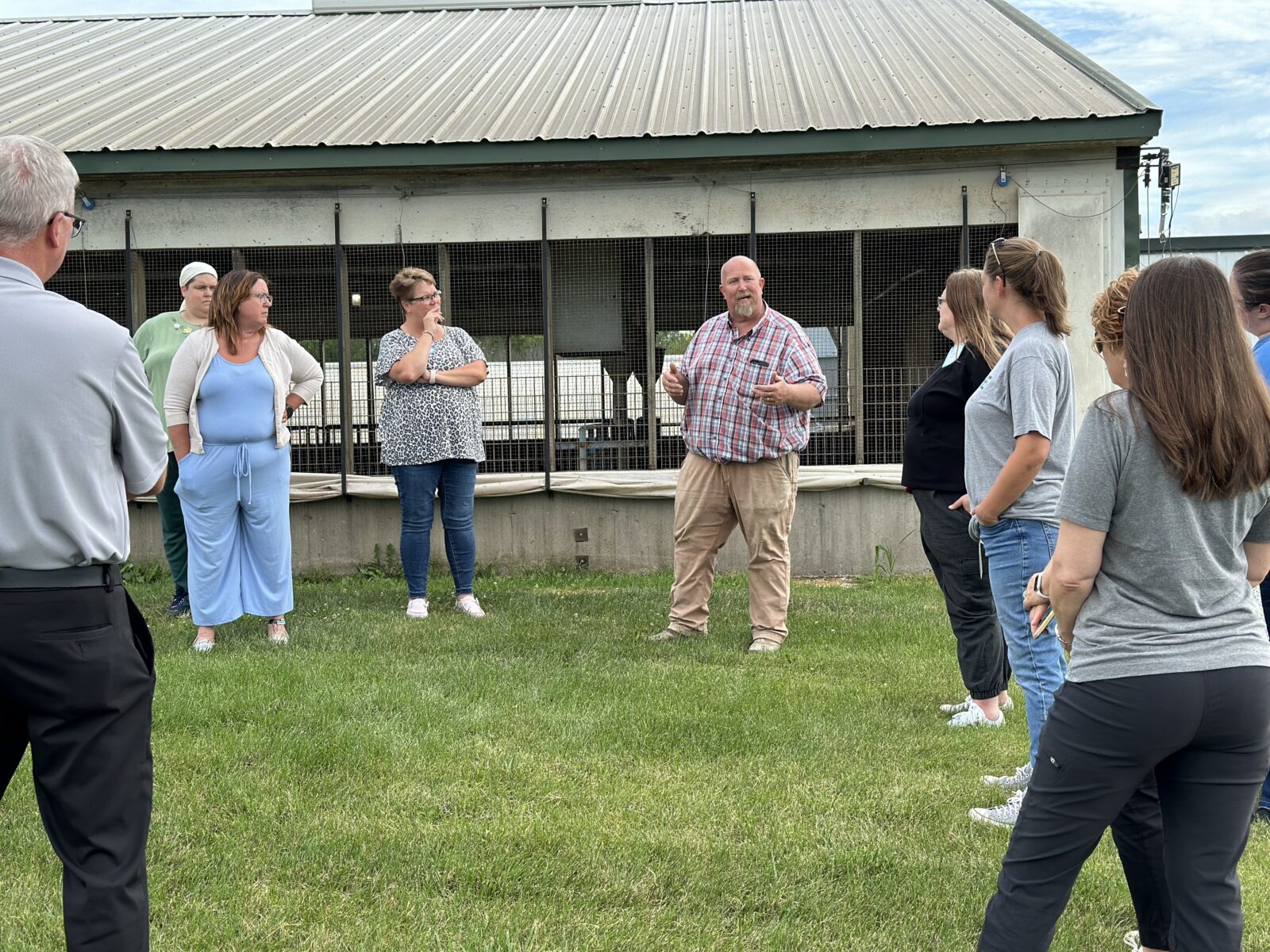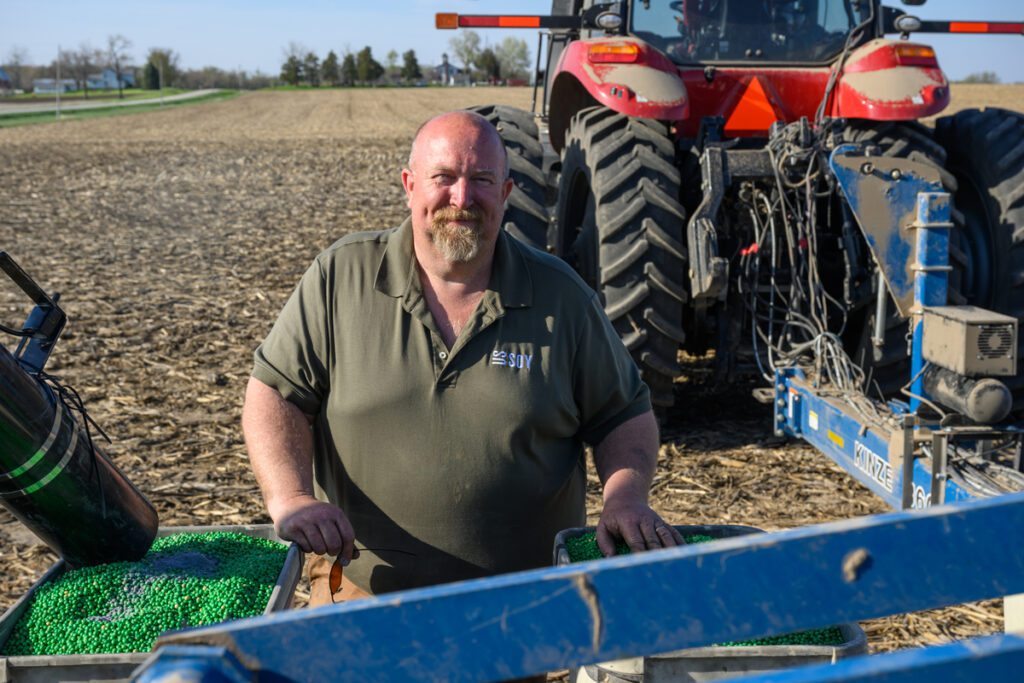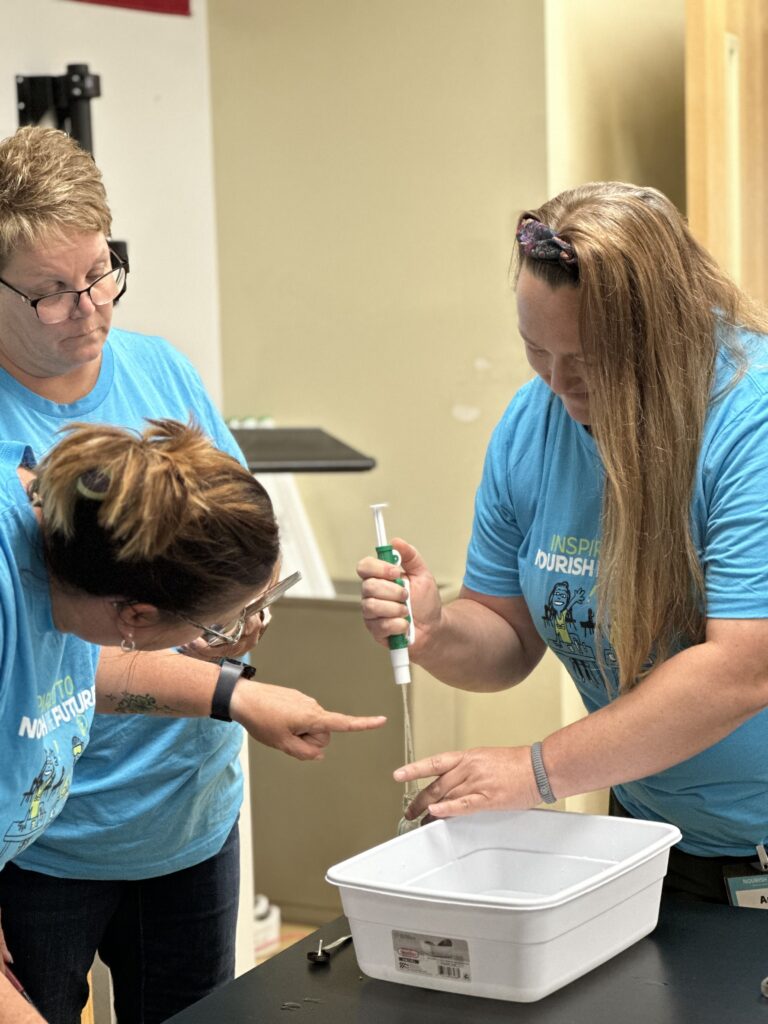The Ground Work series shares the perspectives of U.S. soybean farmers as they observe how the U.S. Soy industry lays the groundwork to grow innovative, reliable and sustainable solutions for people and communities around the world.
As a farmer producing food, feed and fuel for others, I believe it’s my responsibility to take every opportunity to share what we do with others in my community and beyond. I’m proud of our work, but farmers are such a small percentage of the U.S. population that it can be hard to effectively tell our stories.
I am constantly looking for outside-the-box ideas to share the value of agriculture. I currently serve as a director on the United Soybean Board. This level of involvement in the U.S. Soy industry exposes me to many ways farmers connect with the people we feed.
At a meeting during the summer of 2023, I learned about Nourish the Future, a national education initiative developed by science teachers, for science teachers. Farmers like me support this effort through U.S. Soy checkoff investments and similar contributions from other farmer organization.
What better way to tell our stories than to reach the secondary science teachers that are training our future geneticists, researchers and engineers?
I learned that Nourish the Future provides curriculum and professional development workshops for middle school and high school science teachers to help them explore the science of food and fuel in their classrooms. The lessons connect students to agriculture though science-based resources that meet national education standards and tackle real-world issues.
I also found out that these workshops had not yet been held in Iowa, where I farm with my wife and sons.
Like any (average) student, I did a little easy homework. I happened to meet a group of teachers participating in the program at a conference in late February 2024. I joined them for a quick lunch, and they explained that Nourish the Future resources gave them practical new material that made teaching science easier. Many of them who had been using these lessons had a few students who studied agriculture in college — a choice they wouldn’t have made without the program.
I wanted to bring that opportunity to teachers and students in my area. I believe investments that get young adults interested in agriculture will benefit everyone. I worked with Nourish the Future and my state soybean association to host a two-day workshop, Feeding and Fueling the World: A Workshop for Iowa Teachers, in my area in late June 2024.
My family farms near Davenport, Iowa, just a few miles from the Mississippi River, and about 180 miles or 290 kilometers west of Chicago, Illinois. We raise soybeans, corn, alfalfa, pigs and beef cows and calves. Iowa has both heavy agriculture and urban areas, and even in areas like mine, next door to the global headquarters for John Deere, many students are two or three generations removed from the farm.
The teachers that participated in this first Nourish the Future workshop in Iowa were both local and from as far as the Chicago suburbs and rural northeast Missouri. They got hands-on experience with lesson plans at a local high school, but my family hosted a farm tour and dinner for them.
I showed them our pigs and cattle, the edge of the field where we installed a bioreactor that uses buried woodchips to remove nitrates from water as it flows out of a field and some of the equipment we use to farm. I even showed them my experimental effort to create a piece of farm equipment I can use to put fertilizer next to my soybean seeds as they are planted. While it isn’t working as intended yet, I talked about the science behind my ideas and how on-farm research helps me improve.
The Nourish the Future team received overwhelmingly positive feedback from the teachers who participated, and I heard many of their ideas to bring what they learned to their classroom. One middle school science teacher from a rural district thought starting the year with lessons like “chemistry for farmers” would help her students see the value in science class. A teacher from an urban area plans to use labs focused on water quality.
I enjoyed hosting these teachers, and they are in a great place to help tell the story of today’s agriculture. If these teachers on average teach four classes each of two semesters with 20 students in each class, they can reach 160 students each year. And they plan to tell other teachers about the workshop. That allows our story to snowball.
These teachers could influence a student who becomes the next Norman Borlaug, the American agronomist awarded the Noble Peace Prize credited with efforts that led to the Green Revolution and saving countless lives from starvation. They could introduce students to their future career.
Or they can simply help students understand how science connects to everyday life: the food they eat and the fuel that gets them where they need to go. And that’s a great way to tell the story of agriculture.



